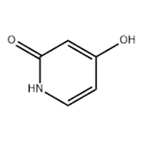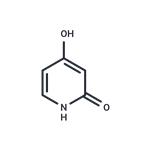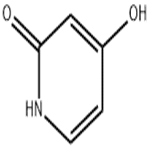Description
2,4-Dihydroxypyridine belongs to the class of organic compounds known as pyridinones. Pyridinones are compounds containing a pyridine ring, which bears a ketone. This compound has been identified in human blood. 2,4-dihydroxypyridine is not a naturally occurring metabolite and is only found in those individuals exposed to this compound or its derivatives. Technically 2,4-Dihydroxypyridine is part of the human exposome. The exposome can be defined as the collection of all the exposures of an individual in a lifetime and how those exposures relate to health. An individual's exposure begins before birth and includes insults from environmental and occupational sources.
Application
2,4-Dihydroxypyridine is profusely employed in multiple fields such as pesticide design, pharmacology, and clinical therapeutics[1]. This compound could used as a new growth-directing agent to to prepare AgPt nanorings supported on reduced graphene oxide (AgPt NRs-rGO) through a facile one-pot wet-chemical route. This label-free electrochemical immunosensor could be used for the sensitive detection of CEA[2].
Chemical Properties
white to yellow-beige crystals or cryst. powder
Uses
2,4-Dihydroxypyridine (3-deazauracil) was used in the synthesis of diazaphenoxathiin skeleton.
Definition
ChEBI: 2,4-Dihydroxypyridine is a pyridone.
General Description
2,4-Dihydroxypyridine (3-deazauracil) is a potent inhibitor of dihydrouracil dehydrogenase.
References
[1] Pajares A, et al. Ionization effects on the sensitized photooxidation of 2,3-dihydroxypyridine and 2,4-dihydroxypyridine: a kinetic study. Journal of Photochemistry and Photobiology A: Chemistry, 2002; 153: 101-107.
[2] Wang R, et al. A label-free electrochemical immunosensor based on AgPt nanorings supported on reduced graphene oxide for ultrasensitive analysis of tumor marker. Sensors and Actuators B: Chemical, 2017; 254: 1174-1181.




